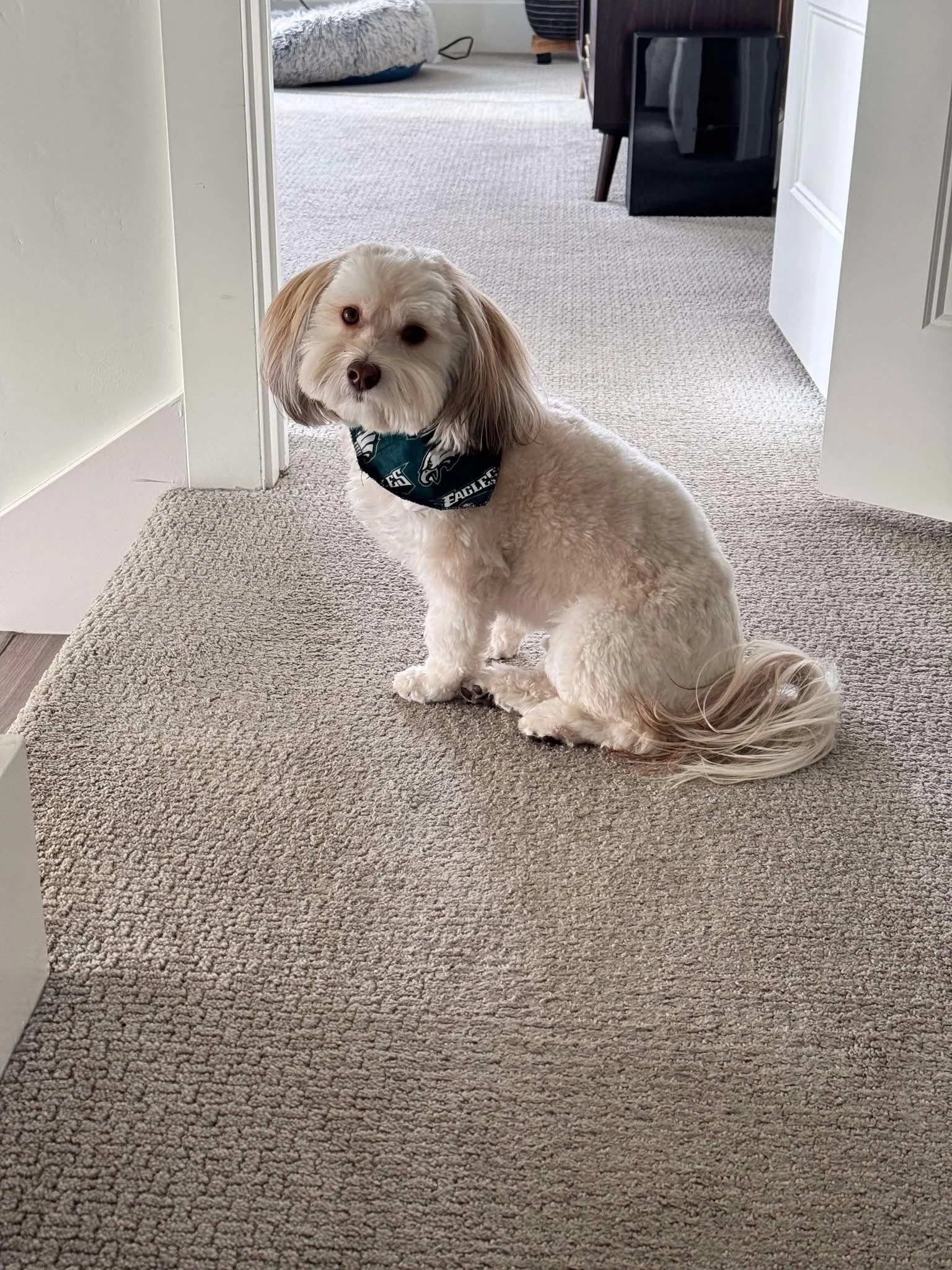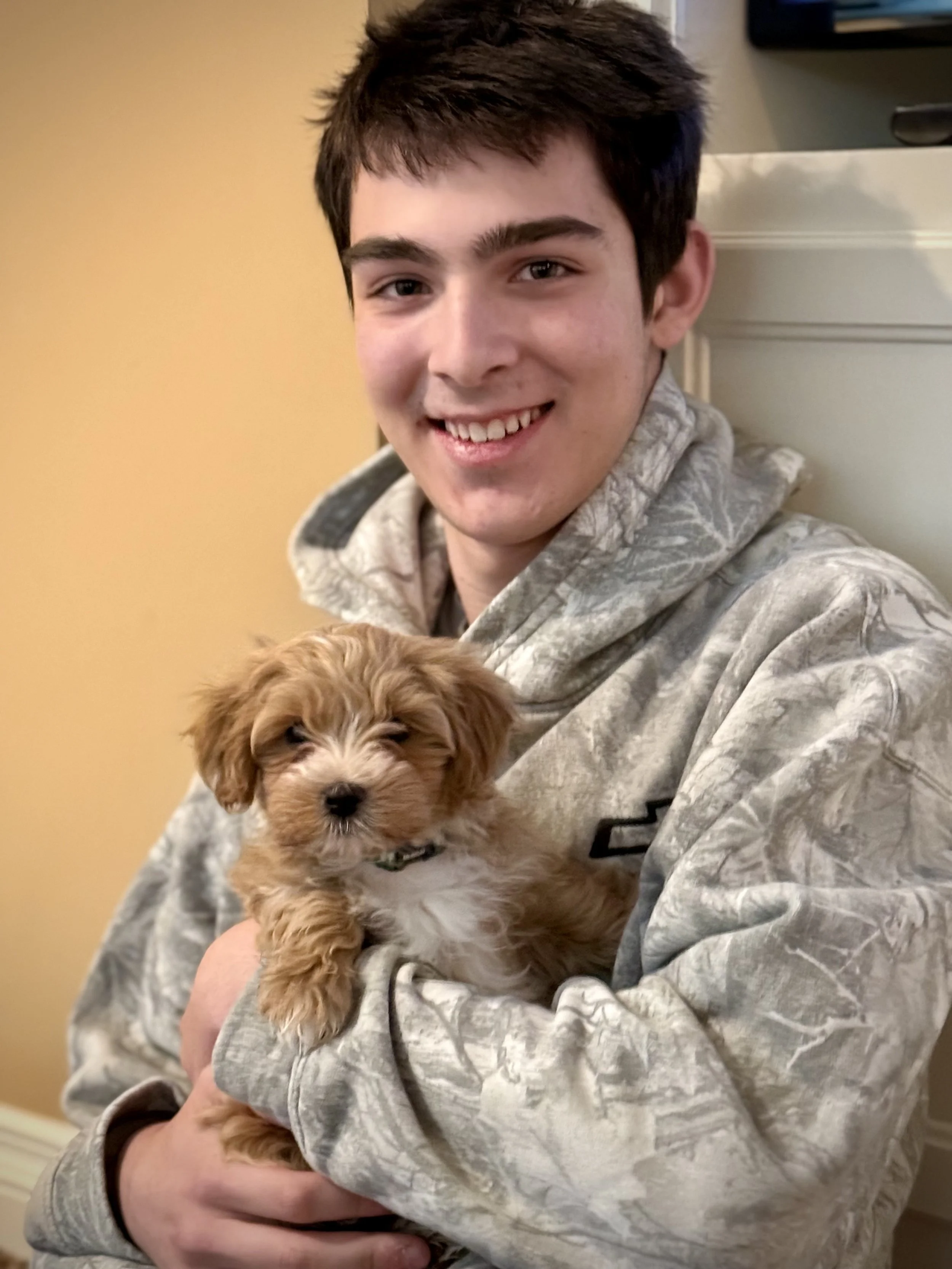HEALTH TESTING
The health of a puppy is the most important aspect of a breeding program. Losing a pup/dog can be very devastating to the family. Although a good breeder knows their lines well, there may be a time when a genetic disorder may arise. We have not had any debilitating genetic disorders in our lines, but in the event this should ever happen, we would like to help lessen the blow of losing a dog. In the event a puppy passes away from a genetic event or presents with a crippling hereditary defect in a 3 year time span, the family will have a choice of selecting a new puppy or we will help to pay for vet bills up to the amount of purchase price. The funds would go directly to the vets office. Although this will not make up for losing a dog in the first place, we can only hope it helps. Most breeders only offer a one year guarantee, but unfortunately a lot of hereditary defects will not present themselves until the pup is a little older.
We do all the recommended health testing on our adults. This is so much more than a veterinary exam. The orthopedic foundation (OFA) recommends testing for hereditary conditions known to afflict each breed. For Havanese, they recommend the BAER hearing test completed by an audiologist, CAER vision test completed by an ophthalmologist, patellas (knees) by the veterinarian and hips with an X-ray checked by 3 different radiologists. The hips are given a pass/fail and then rated passing with a fair, good or excellent score and failing with a slight, moderate or severe hip dysplasia rating. These are completed at age appropriate times, hips cannot be checked until they are 2 years old and patellas at a year old. If a breeder completes all of the recommended testing, they are awarded a CHIC number. Keep in mind that the CHIC number is a good way to know that all of the recommended health testing has been completed, but it does not mean that they passed all of the tests. The CHIC number is automatically displayed on OFA once completed, so if it is not there, the testing is not completed. An exception to this rule is if the breeder completed the Penn Hip. This is a different xray that checks the hips and is not usually part of OFA. This is also an acceptable evaluation of the hips. Each dog is given a distraction index score between 0-1. Many people don’t know how to read the Penn Hip accurately though. A large part of this testing is not only the DI number given, but how much laxity is naturally present in each breed. Havanese naturally have more laxity in the hip joint, so the starting range of normal is set at a higher number. This can be confusing as both factors need to be considered, so I always consult with my reproductive vet as to his recommendations for breeding. To the date of writing this, Roxy is the only parent dog I have used this method on. It is said to be as good, if not better (depending on who you ask) than OFA for hips. You can have this test completed before the dog is 2 years old, unlike OFA.
We also go a step further and test with Embark genetic testing. Embark is by no means a comprehensive health test. It is an adjunct to the OFA testing. If DNA testing is the only testing completed by a breeder, or very limited OFA testing, you might consider looking elsewhere. Ethical breeders will always go above and beyond to help ensure the health and longevity of a puppy. However, we cannot guarantee your puppy will never have any problems. The chances of that happening are greatly reduced with health testing.
Benoit lives in Washington and enjoys the beach and kayaking.
Harper loves in Leavenworth, Washington
Tess loves her family in California.
Rocco lives in Eagle, Idaho
Willow lives in Oregon. She is a dark red.
Charlie now lives in Marysville, Washington
Javi lives in Boise, Idaho.
Oscar now lives in Seattle, Washington
Russell lives in Caldwell, Idaho.
Sunshine with her new family in Kennewick, Washington
Birdie lives in Boise, Idaho
Pepper is absolutely gorgeous!!!
Mabel now lives in Sherwood, Oregon
Mojo has been great with the grandkids of this wonderful family in Boise, Idaho
Bella lives in Wasilla, Alaska
Henry lives in Sultan, Washington
Khloe is quite the little camper and all around adventurer in Montana.
Skye lives in Seattle, Washington
Miso lives in Chatsworth, California
Tigger in Bend, Oregon.
Waffles lives in Benton City, Washington
Talulah lives in Portland, Oregon
Theo and Rudy live in Lake Oswego, Oregon
Aspen lives in Tigard, Oregon
Remi lives in Portland, Oregon.
Moose lives in Beaverton, Oregon
Gus and Charlie live in Carmichael, California
Daisy lives in Meridian, Idaho
Tigger and her new boy Kody in Bend, Oregon
Poppi lives in Estacada, Oregon.
Nelly lives in Snohomish, Washington
Sophie is the prettiest chocolate color and lives in Meridian, Idaho.
Pupper Nutter lives in Sammamish, Washington.

































